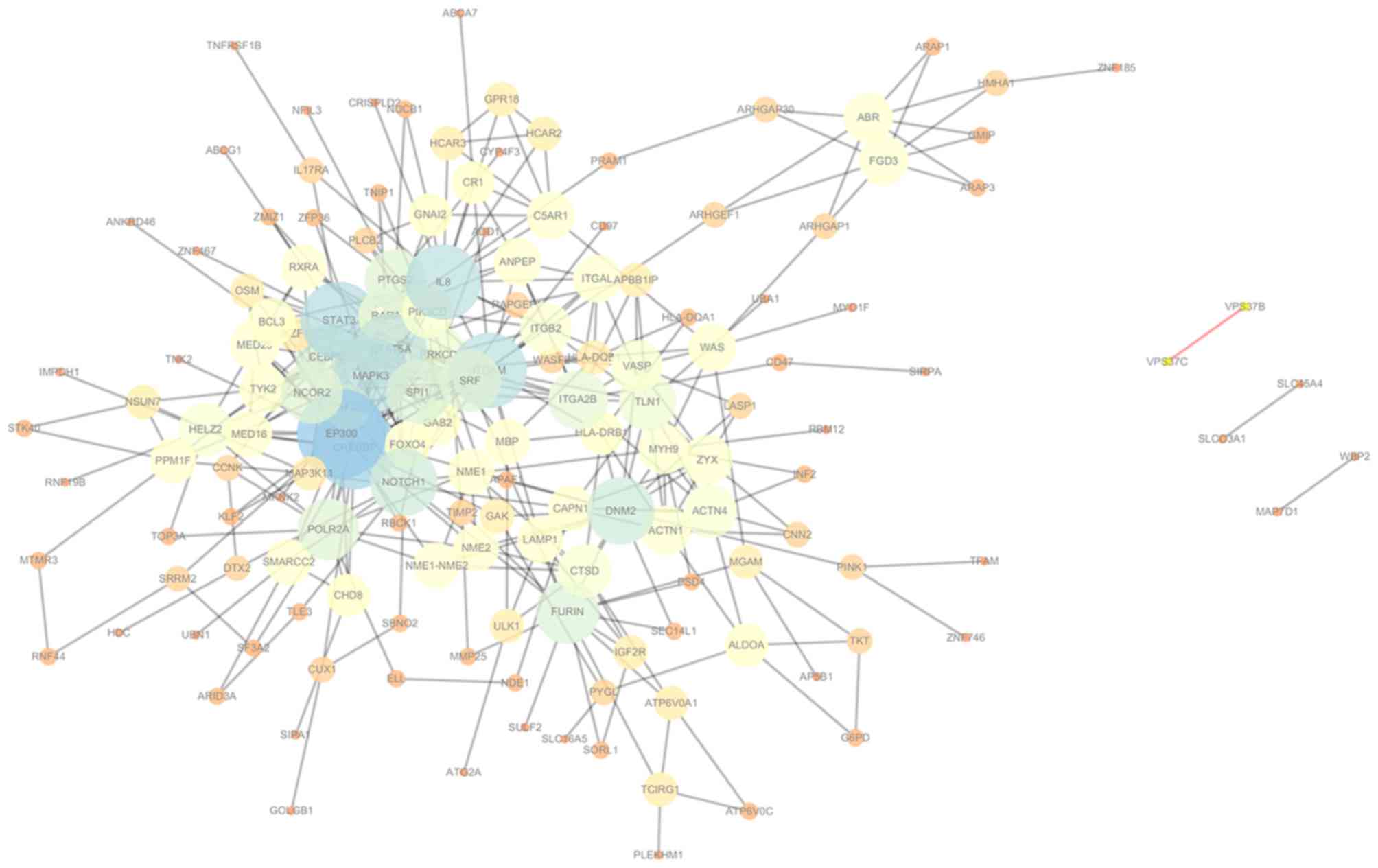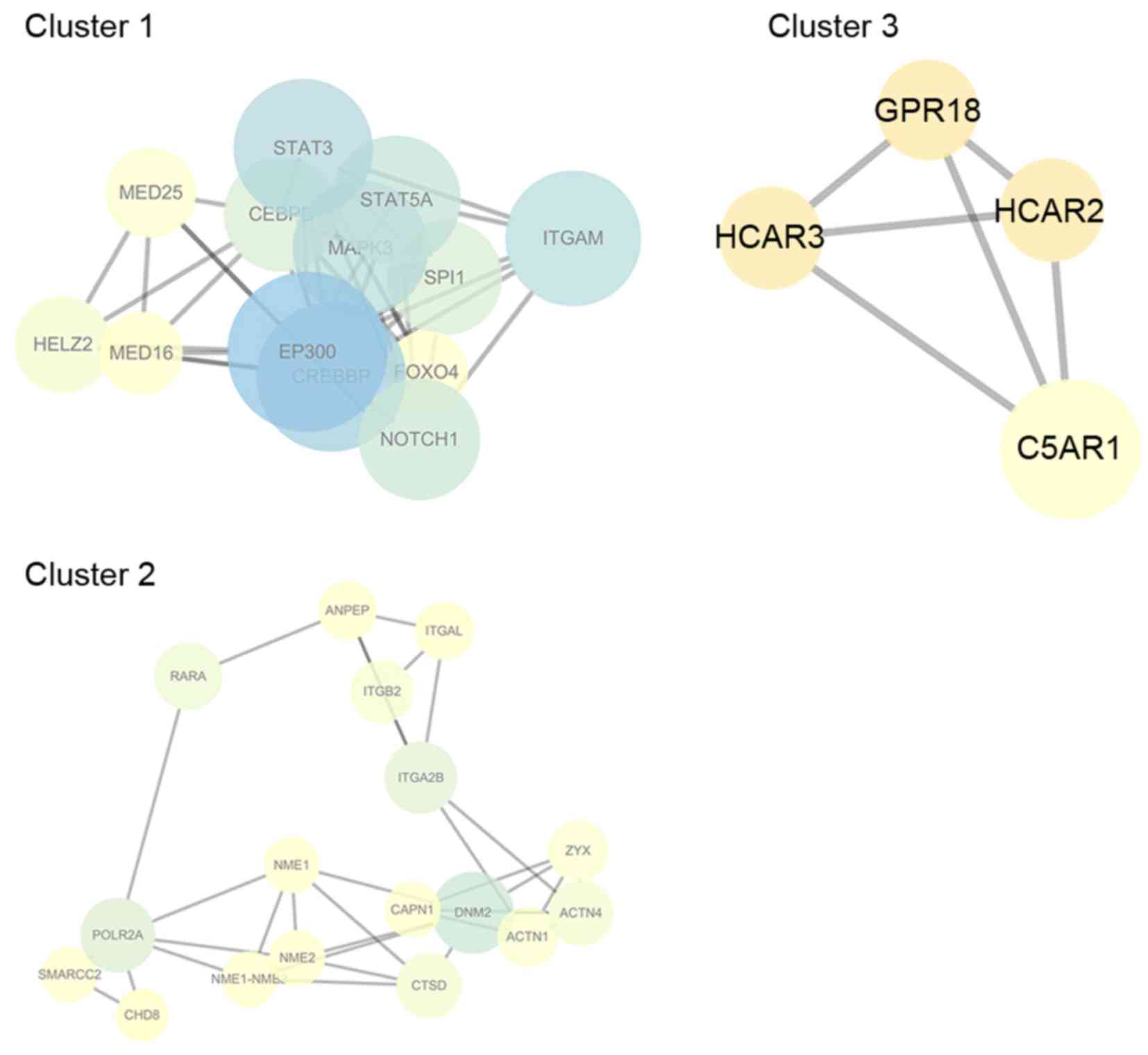|
1
|
Palmer G: Complex regional pain syndrome.
Aust Prescr. 38:82–86. 2015. View Article : Google Scholar : PubMed/NCBI
|
|
2
|
de Mos M, de Bruijn AG, Huygen FJ,
Dieleman JP, Stricker BH and Sturkenboom MC: The incidence of
complex regional pain syndrome: A population-based study. Pain.
129:12–20. 2007. View Article : Google Scholar : PubMed/NCBI
|
|
3
|
Stanton-Hicks M, Jänig W, Hassenbusch S,
Haddox JD, Boas R and Wilson P: Reflex sympathetic dystrophy:
Changing concepts and taxonomy. Pain. 63:127–133. 1995. View Article : Google Scholar : PubMed/NCBI
|
|
4
|
Bruggeman AW, Oerlemans MH and Frölke JP:
Warm and cold complex regional pain syndromes: Differences beyond
skin temperature? Neurology. 73:1711–1712. 2009. View Article : Google Scholar : PubMed/NCBI
|
|
5
|
Bruehl S: Complex regional pain syndrome.
BMJ. 351:h27302015. View Article : Google Scholar : PubMed/NCBI
|
|
6
|
Bussa M, Guttilla D, Lucia M, Mascaro A
and Rinaldi S: Complex regional pain syndrome type I: A
comprehensive review. Acta Anaesthesiol Scand. 59:685–697. 2015.
View Article : Google Scholar : PubMed/NCBI
|
|
7
|
Goebel A and Blaes F: Complex regional
pain syndrome, prototype of a novel kind of autoimmune disease.
Autoimmun Rev. 12:682–686. 2013. View Article : Google Scholar : PubMed/NCBI
|
|
8
|
Oaklander AL and Fields HL: Is reflex
sympathetic dystrophy/complex regional pain syndrome type I a
small-fiber neuropathy? Ann Neurol. 65:629–638. 2009. View Article : Google Scholar : PubMed/NCBI
|
|
9
|
Barad MJ, Ueno T, Younger J, Chatterjee N
and Mackey S: Complex regional pain syndrome is associated with
structural abnormalities in pain-related regions of the human
brain. J Pain. 15:197–203. 2014. View Article : Google Scholar : PubMed/NCBI
|
|
10
|
Jin EH, Zhang E, Ko Y, Sim WS, Moon DE,
Yoon KJ, Hong JH and Lee WH: Genome-wide expression profiling of
complex regional pain syndrome. PLoS One. 8:e794352013. View Article : Google Scholar : PubMed/NCBI
|
|
11
|
Huang DW, Sherman BT and Lempicki RA:
Systematic and integrative analysis of large gene lists using DAVID
Bioinformatics resources. Nat Protoc. 4:44–57. 2009. View Article : Google Scholar : PubMed/NCBI
|
|
12
|
da Huang W, Sherman BT and Lempicki RA:
Bioinfromatics enrichment tools: Paths toward the comprehensive
functional analysis of large gene lists. Nucleic Acids Res.
37:1–13. 2009. View Article : Google Scholar : PubMed/NCBI
|
|
13
|
Szklarczyk D, Franceschini A, Wyder S,
Forslund K, Heller D, Huerta-Cepas J, Simonovic M, Roth A, Santos
A, Tsafou KP, et al: STRING v10: Protein-protein interaction
networks, integrated over the tree of life. Nucleic Acids Res.
43:D447–D452. 2015. View Article : Google Scholar : PubMed/NCBI
|
|
14
|
Goebel A: Immunoglobulin responsive
chronic pain. J Clin Immunol. 30:(Suppl 1). S103–S108. 2010.
View Article : Google Scholar : PubMed/NCBI
|
|
15
|
Cooper MS and Clark VP: Neuroinflammation,
neuroautoimmunity, and the co-morbidities of complex regional pain
syndrome. J Neuroimmune Pharmacol. 8:452–469. 2013. View Article : Google Scholar : PubMed/NCBI
|
|
16
|
Kohr D, Singh P, Tschernatsch M, Kaps M,
Pouokam E, Diener M, Kummer W, Birklein F, Vincent A, Goebel A, et
al: Autoimmunity against the β\2 adrenergic receptor and
muscarinic-2 receptor in complex regional pain syndrome. Pain.
152:2690–2700. 2011. View Article : Google Scholar : PubMed/NCBI
|
|
17
|
Klein J and Sato A: The HLA system. First
of two parts. N Engl J Med. 343:702–709. 2000. View Article : Google Scholar : PubMed/NCBI
|
|
18
|
Kemler MA, van de Vusse AC, van den
Berg-Loonen EM, Barendse GA, van Kleef M and Weber WE: HLA-DQ1
associated with reflex sympathetic dystrophy. Neurology.
53:1350–1351. 1999. View Article : Google Scholar : PubMed/NCBI
|
|
19
|
van Rooijen DE, Roelen DL, Verduijn W,
Haasnoot GW, Huygen FJ, Perez RS, Perez RS, Claas FH, Marinus J,
van Hilten JJ and van den Maagdenberg AM: Genetic HLA associations
in complex regional pain syndrome with and without dystonia. J
Pain. 13:784–789. 2012. View Article : Google Scholar : PubMed/NCBI
|
|
20
|
van de Beek WJ, Roep BO, van der Slik AR,
Giphart MJ and van Hilten BJ: Susceptibility loci for complex
regional pain syndrome. Pain. 103:93–97. 2003. View Article : Google Scholar : PubMed/NCBI
|
|
21
|
Mailis A and Wade J: Profile of Caucasian
women with possible genetic predisposition to reflex sympathetic
dystrophy: A pilot study. Clin J Pain. 10:210–217. 1994. View Article : Google Scholar : PubMed/NCBI
|
|
22
|
van Hilten JJ, van de Beek WJ and Roep BO:
Multifocal or generalized tonic dystonia of complex regional pain
syndrome: A distinct clinical entity associated with HLA-DR13. Ann
Neurol. 48:113–116. 2000. View Article : Google Scholar : PubMed/NCBI
|
|
23
|
Wang F, Marshall CB and Ikura M:
Transcriptional/epigenetic regulator CBP/p300 in tumorigenesis:
Structural and functional versatility in target recognition. Cell
Mol Life Sci. 70:3989–4008. 2013. View Article : Google Scholar : PubMed/NCBI
|
|
24
|
Lunning MA and Green MR: Mutation of
chromatin modifiers; an emerging hallmark of germinal center B-cell
lymphomas. Blood Cancer J. 5:e3612015. View Article : Google Scholar : PubMed/NCBI
|
|
25
|
Kishimoto W and Nishikori M: Molecular
pathogenesis of follicular lymphoma. J Clin Exp Hematop. 54:23–30.
2014. View Article : Google Scholar : PubMed/NCBI
|
|
26
|
Seltzer LE and Paciorkowski AR: Genetic
disorders associated with postnatal microcephaly. Am J Med Genet C
Semin Med Genet. 166C:140–155. 2014. View Article : Google Scholar : PubMed/NCBI
|
|
27
|
Lim CP and Cao X: Structure, function, and
regulation of STAT proteins. Mol Biosyst. 2:536–550. 2006.
View Article : Google Scholar : PubMed/NCBI
|
|
28
|
Takeda K, Noguchi K, Shi W, Tanaka T,
Matsumoto M, Yoshida N, Kishimoto T and Akira S: Targeted
disruption of the mouse Stat3 gene leads to early embryonic
lethality. Proc Natl Acad Sci USA. 94:3801–3804. 1997. View Article : Google Scholar : PubMed/NCBI
|
|
29
|
Takeda K, Kaisho T, Yoshida N, Takeda J,
Kishimoto T and Akira S: Stat3 activation is responsible for
IL-6-dependent T cell proliferation through preventing apoptosis:
Generation and characterization of T cell-specific Stat3-deficient
mice. J Immunol. 161:4652–4660. 1998.PubMed/NCBI
|
|
30
|
Laurence A and O'Shea JJ: T(H)-17
differentiation: Of mice and men. Nat Immunol. 8:903–905. 2007.
View Article : Google Scholar : PubMed/NCBI
|
|
31
|
Ross JA, Nagy ZS, Cheng H, Stepkowski SM
and Kirken RA: Regulation of T cell homeostasis by JAKs and STATs.
Arch Immunol Ther Exp (Warsz). 55:231–245. 2007. View Article : Google Scholar : PubMed/NCBI
|
|
32
|
Bromberg JF, Wrzeszczynska MH, Devgan G,
Zhao Y, Pestell RG, Albanese C and Darnell JE Jr: Stat3 as an
oncogene. Cell. 98:295–303. 1999. View Article : Google Scholar : PubMed/NCBI
|
|
33
|
Yao Z, Kanno Y, Kerenyi M, Stephens G,
Durant L, Watford WT, Laurence A, Robinson GW, Shevach EM, Moriggl
R, et al: Nonredundant roles for Stat5a/b in directly regulating
Foxp3. Blood. 109:4368–4375. 2007. View Article : Google Scholar : PubMed/NCBI
|
|
34
|
Gotthardt D, Putz EM, Grundschober E,
Prchal-Murphy M, Straka E, Kudweis P, Heller G, Bago-Horvath Z,
Witalisz-Siepracka A, Cumaraswamy AA, et al: STAT5 is a key
regulator in NK cells and acts as a molecular switch from tumor
surveillance to tumor promotion. Cancer Discov. 6:414–429. 2016.
View Article : Google Scholar : PubMed/NCBI
|
















